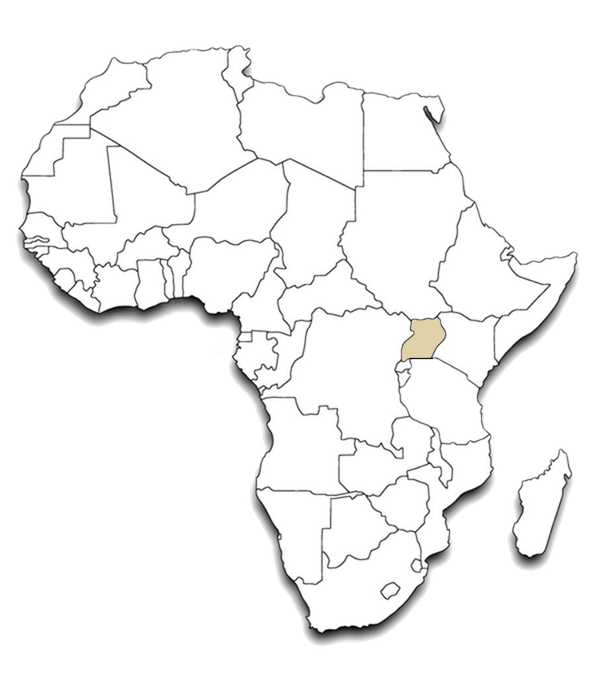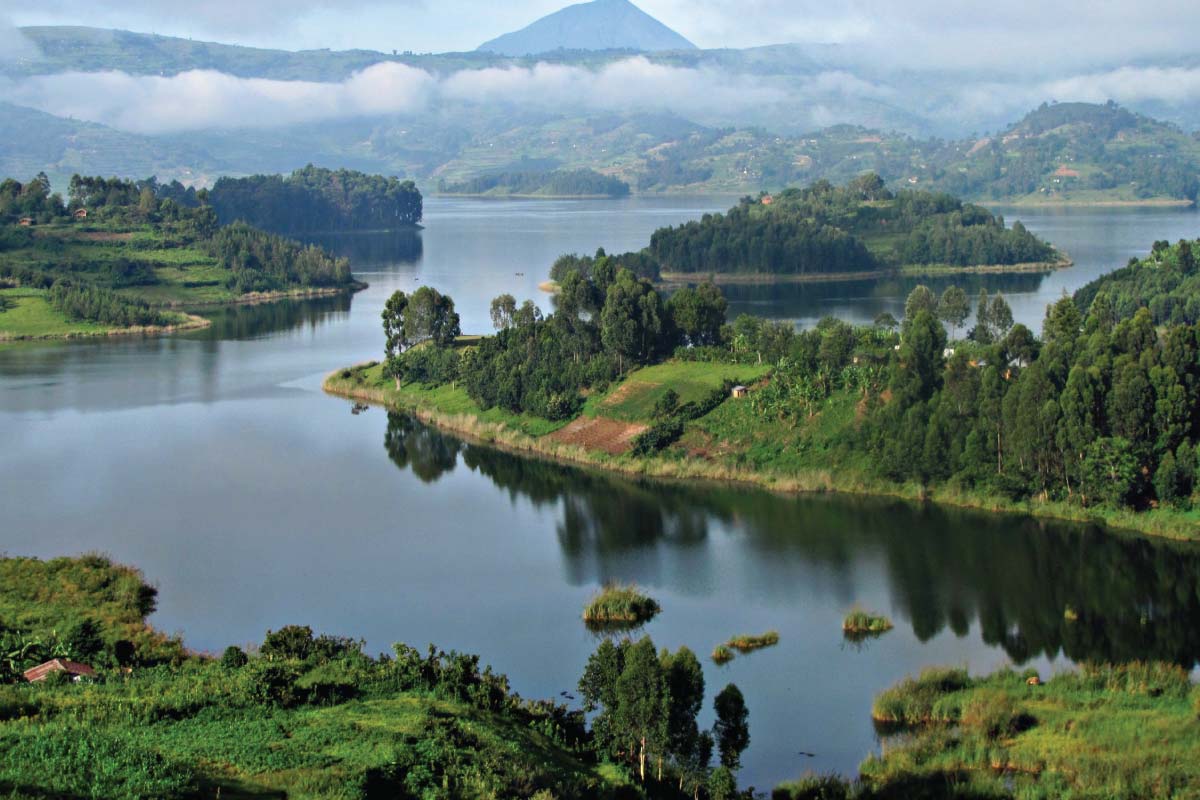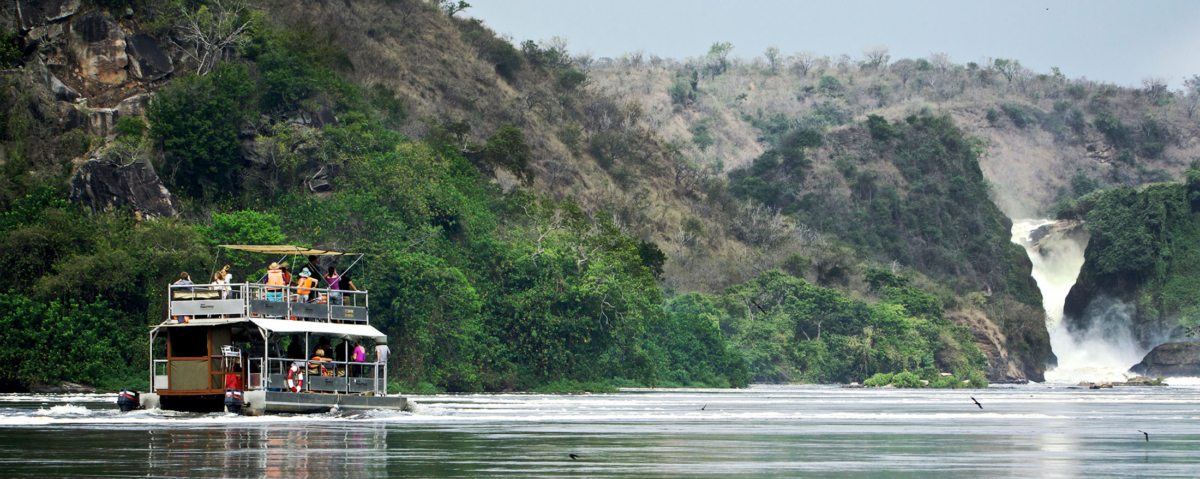UGANDA
For magnificence, for variety of form and colour, for profusion of brilliant life — bird, insect, reptile, beast — for vast scale — Uganda is truly ‘the Pearl of Africa’.” Winston Churchill penned these words about Uganda in 1907, and more than a century later, they still ring true. Fantastic safaris, seeing gorillas or have a close encounter with chimpanzees, Uganda has it all.
UGANDA
“For magnificence, for variety of form and colour, for profusion of brilliant life — bird, insect, reptile, beast — for vast scale — Uganda is truly ‘the Pearl of Africa’.” Winston Churchill penned these words about Uganda in 1907, and more than a century later, they still ring true.
Uganda is one of the world’s most biodiverse countries: home to 13 types of primates and 330 mammals, of which six are found nowhere else, as well as more than 1000 bird species, it also encompasses a startling range of landscapes, from Africa’s highest mountain range and the source of the Nile – the world’s longest river – to the continent’s largest lake.
Uganda has one special attraction that only two other countries in the world also share: Mountain gorillas. The country is home to half of the world’s remaining population of these great apes, and seeing them in the wild is one of the planet’s most thrilling and memorable wildlife encounters. While you can also go gorilla trekking in Rwanda and the DRC, Uganda is the only country that offers the gorilla habituation experience, where you get to spend half a day with a gorilla group that is in the process of being exposed to humans.
But there’s more to Uganda than just gorillas: the country is also a fantastic place to do chimpanzee trekking, another wildlife activity that you can only do in a few places in Africa. Another special animal highlight are Uganda’s tree-climbing lions, which are found in Queen Elizabeth National Park. There’s only one other place in the world where lions climb trees – Lake Manyara National Park in Tanzania – so seeing these big cats draped across branches is a rare sight.
There aren’t many other countries in Africa where you have the chance to experience safaris on the open savannah as well as in tropical forests, and Uganda offers both. In parks such as Murchison Falls and Queen Elizabeth, you can have the quintessential East African safari of spotting big game on the wide-open plains, while you also have the opportunity to go chimpanzee trekking and searching for other primates in pockets of rainforest in Western Uganda.
For birdwatching, Uganda is one of the best countries in Africa, due to its astounding diversity of species – a result of its position in between the East African savanna and West African rainforest, and its variety of different habitats. Along with the many beautiful species to search for, birdwatchers come to Uganda for the chance of seeing the elusive shoebill stork, which is hardly seen anywhere else and is rated as one of the top five birds to spot in the continent.
WHEN TO GO TO UGANDA
Uganda’s raised topography means a cooler climate than its equatorial setting suggests but if you’re planning a gorilla trek, it’s important to know when to go to Uganda for the easiest trekking conditions. Although it’s regarded as a year-round activity, the best time to visit Uganda for gorilla trekking is during the country’s two dry seasons: January and February and from June to September.
Game viewing in Uganda’s savannah parks is best at the end of the dry seasons – February and March and September/early October – when wildlife is concentrated around water sources. Bird watching is fantastic all year round but is at its peak between November and April when migrant species are present. We’d recommend avoiding a Uganda safari entirely during the heavy rains of April and May.
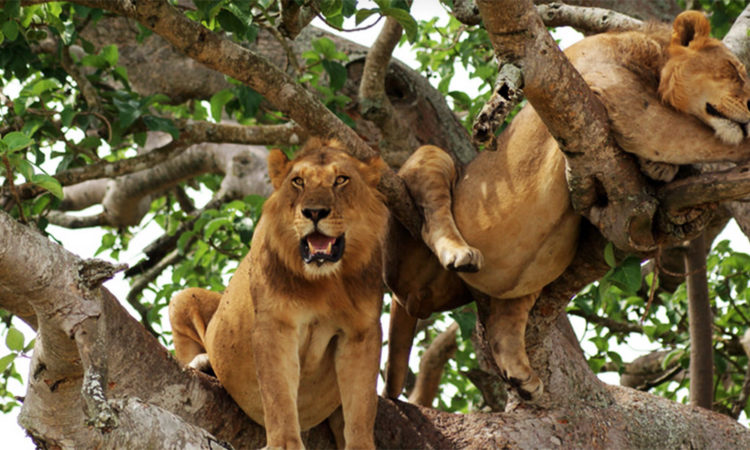
HIGHLIGHTS
Bwindi Inpenetrable National Park
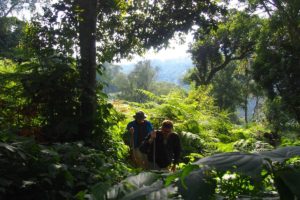
In Uganda’s southwestern corner, the lush, mountainous forest of Bwindi Impenetrable National Park conserves the country’s most alluring natural asset: around 400 mountain gorillas, or half of the world’s remaining wild population. Most people come to Bwindi – Uganda’s most popular tourist destination – to track these magnificent apes (more than a hundred of which have been habituated), which involves an adventurous hike on hilly tracks through the misty tropical rainforest. Along the way there are 120 other mammals to spot, including forest duikers, rare l’Hoest monkeys, olive baboons, bushbuck and black-and-white colobus monkeys, as well as seldom seen forest elephants – an extremely lucky sighting – and an incredible number of avian creatures: 220 species of butterfly and 350 bird species.
Getting to see a group of mountain gorillas in their natural habitat is the main reason that people come to Bwindi Impenetrable National Park, and it’s one of the top experiences that Uganda has to offer. There are two options for coming-face-to-face with our great ape cousins: most travellers do the standard gorilla trekking experience, which costs US$600 per person and involves hiking to your assigned habituated group. You can then spend an hour observing the gorillas as they play, groom and eat, before you hike back out of the park. The second option, which costs US$1500 per person, is the gorilla habituation experience, where you get to spend a total of four hours with a gorilla group that is in the process of being trained to become used to spending time with people.
Queen Elizabeth National Park
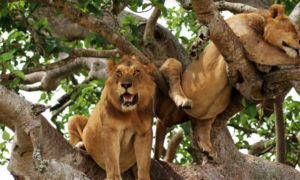
Queen Elizabeth National Park, the second largest and most biodiverse park in Uganda, is the country’s most popular safari destination. Located in western Uganda close to the Rwenzori Mountains, the park encompasses a huge array of different landscapes, including wetlands, swamps and crater lakes, tropical forests, woodland and open savannah, which support a diverse range of wildlife, from 95 mammal species (including 20 carnivores and 10 primates) to more than 600 species of birds. The list of highlights includes easily spotted elephant and buffalo, Ugandan kob, sitatunga, giant forest hog and topi – while at the top of the list are the tree-climbing lions found in the south of the park. In addition to game drives on the open savannah, you can also do boat cruises to see hippos and crocodiles and hike through rainforest to find chimpanzees.
Lions are only found climbing trees in two places in Africa, so it’s a rare and remarkable sight to see them lying in the branches of giant fig and acacia trees in the remote Ishasha Sector at the southern end of the park.
Munchison Falls

Uganda’s largest park, the wild and beautiful Murchison Falls National Park offers breath taking scenery of palm-dotted hills, swamps, riverine woodland and forest, East Africa’s most dramatic waterfall, and a remarkable diversity of wildlife on land and in the Victoria Nile, which teems with hippos and crocodiles. The park is home to large herds of buffalo and elephant and a good concentration of lion as well as leopard and several antelope species from grey duiker and Ugandan kob to oribi and Jackson’s hartebeest. It’s one of the few places in Uganda where you can find giraffe, and on the plains you may be able to spot the rare ground-dwelling patas monkey. Birding is excellent, and the top highlight is a sighting of the endangered shoebill stork, a rare creature that sits at the top of many birders’ wish list. You’re most likely to see them between January and March on the Delta cruise boat ride. Murchison Falls National Park is part of the greater Murchison Falls Conservation Area, which incorporates the Bugungu and Karuma reserves, as well as Kaniyo Pabidi forest, where you can go chimp trekking.
The park’s main feature is the Victoria Nile, which cuts through the wilderness and cascades 45 metres down through a narrow gorge at Murchison Falls, the world’s most powerful waterfall. Boat cruises along the river take you to see the thunderous waterfall, but they’re also a chance to spot pods of grunting hippos, crocodiles, buffaloes and bathing elephants. Not to be missed is the short hike up to the top of the falls where you’ll have several viewpoints to see the take in the majestic waterfalls (and spot some monkeys and baboons along the way).
Our favorite places in UGANDA
WATCH THE VIDEO
WHAT ARE YOU WAITING FOR?
Contact us if you’re ready to book your safari or to get additional information.


